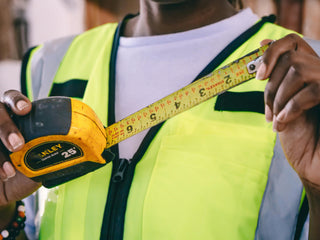Condoms can work well to prevent contraception but you need to use them properly to reduce the likelihood that you or a partner will become pregnant.
A condom is unlikely to break if it’s used correctly. However, if it does break, you should take precautions. If a condom breaks during intercourse or any other sexual contact, the chances of getting pregnant increase significantly. For advice on this subject and others read on.
Table of Contents:
- What are the chances of becoming pregnant while using condoms?
- Do condoms prevent STDs?
- How safe is a condom?
- Does the pull-out method work?
- What to do if a condom breaks
- How to put on a condom effectively – Step-by-Step Guide
- How to dispose of a condom after use – The Dos and Don’ts
- How to use a female condom: Step-by-Step Guide
- Condoms are not just for preventing pregnancies and STIs
- In Conclusion – The chances of getting pregnant with a condom
What are the chances of getting pregnant with a condom?
The short answer is that they depend on how well you use them and if the condom doesn’t break. If you fear becoming pregnant through condoms, it is vital to use them correctly.
Using them correctly means checking the expiry date, storing them in a cool and dry place, avoiding sharp objects such as scissors when opening the package, not re-using a condom and applying enough water-based lubricant. Rolling it on properly is essential so there are no air bubbles or gaps where semen could seep out.
Making sure you use the correct size condom is vital too. If a condom is too big, it can slip off and be ineffective; if it’s too small, it can break during intercourse.
Many couples also only apply the condom after heavy petting and even vaginal penetration - there can be sperm in pre-ejaculatory fluid. If you have sex more than once, there can be sperm left in the urethra - the tip of the penis. Remember, there are 150 million sperm in each ml of ejaculate - it only takes one sperm to cause a pregnancy.
Read more about effective condom use.
It's also sadly not uncommon for a man not to tell his partner if the condom has broken. This is highly lamentable as this does not give the female partner a chance to have emergency contraception - and time is of the essence. Men in high risk situations may need to go for HIV prophylaxis.
How effective are condoms at preventing pregnancy?
Generally, if used correctly every time during intercourse (without any mistakes or errors), condoms can reduce the chances of unwanted pregnancies by up to 98%, so they are a safe form of birth control.
To ensure they work effectively each time, check for the European CE mark or the UKA marks which ensure these condoms have been properly tested and meet high safety standards. Check for any visible damage before use, and check the expiration date on the packaging. It should go without saying that you should always use a new condom and never reuse condoms.
You should also make sure that the condom you use has not expired, as this can also reduce their effectiveness. and they are more likely to break.
Do condoms prevent STDs?
Condoms are highly effective in preventing the spread of sexually transmitted diseases (STDs). They work by forming a barrier over areas of skin where infection can be passed to another person.
Whilst condoms reduce the chances of getting an STD, they cannot eliminate it. With perfect use, they provide 95% protection from STDs including HIV, but with typical use, this falls to 79%. This means you can get an STD even if you always use condoms and any sexually active person should still have regular tests. Condoms are also better at preventing some STDs than others. (Source)
How safe is a condom?
When used correctly, condoms are incredibly safe and reliable at reducing pregnancy rates and lowering chances of catching STDs. However, many people worry about using them due to their unfamiliarity or lack of understanding when using them correctly.
If you’re scared of using condoms, educating yourself on how to use them correctly is essential. Countless resources online explain the correct process and precautions you should take when using condoms. Condoms are significantly better at preventing pregnancies than the pull-out/withdrawal method.
Does the pull-out method work?
The pull-out or withdrawal method is not reliable contraception, as it does not always prevent sperm from entering the vagina. It can be difficult for someone to withdraw in time before ejaculating, and this method requires a lot of control and trust between partners.
The failure rates of the withdrawal method over 12 months is 22% - which means 1 in 5 couples using it would get pregnant during the year. This is a very high failure rate and anyone not wanting to get pregnant would get far better contraceptive protection using a reliable method of contraception. (Source)
Withdrawal is not a good method of contraception. For more reliable protection against pregnancy, we recommend using a condom each and every time you have sexual contact.
What to do if a condom breaks
If your condom breaks, it’s crucial to take action right away. Firstly, you need to get urgent medical help without delay - from your local sexual health clinic, GP or pharmacy. Time is of the essence when you need emergency contraception - the morning after pill. There are strict time periods during which the different methods can be undertaken. Don't wait - get help as soon as you know there has been an accident. You can find out more information here.
A copper IUD is the best form of emergency contraception and this can be fitted up to 5 days after the earliest calculated day of ovulation. The sexual health clinic, GP or pharmacist can help work this out for you to see if this is an option. It is almost 100% effective in preventing an unplanned pregnancy, whereas the hormonal methods, ellaOne and Levonelle have a failure rate of around 2%. (Source)
You may also want to get tested for STDs if you think your partner has an infection or if there was non-protected sex before or after using the condom.
Choosing condoms that are made from stronger material like latex condoms and thicker condoms will provide extra protection help to reduce the chance of a condom breaking. Also, using oil based lubricants may damage condoms, depending on which material you are using.
Lambskin condoms may provide a closer feeling of skin to skin contact but they are less effective at preventing STIs as the material is too porous.
How to put on a condom effectively – Step-by-Step Guide
Putting a condom on correctly is essential to ensure that it is effective in preventing pregnancy and the spread of STDs. Here’s a step-by-step guide to making sure you do it right:
- Check the expiry date before opening – expired condoms are more likely to break or tear.
- Open the packet carefully – avoid sharp objects such as scissors when opening the packet.
- Put on enough water-based lubricant (or saliva if there’s none available).
- Make sure the rim of the condom faces outwards.
- Roll the condom down until it covers the whole penis.
- Ensure no air bubbles or gaps where semen can seep out.
It’s just as essential to dispose of the condom properly to protect you from unwanted pregnancies.
How to dispose of a condom after use – The Dos and Don’ts
Disposing of condoms properly is an essential part of safe sex. Here’s how you should (and shouldn’t!) do it:
**The Dos**
- Wrap the condom in a tissue before disposing of it.
- Throw the used condom away in a bin.
- Wash your hands with warm soapy water afterwards.
**The Don’ts
- Flush a used or unused condom down the toilet can cause blockages.
- Re-use a condom.
- Leave a used condom lying around after use.
By following these steps carefully, you can ensure that you enjoy sexual intercourse without any worries about unwanted pregnancies.
You may have chosen to use a female condom or femidom; while male condoms are the most used contraceptive, women do not exclusively choose them.
How to use a female condom: Step-by-Step Guide
Using a female condom is just as easy and effective as using a male condom. Here’s how to do it:
- Remove the female condom from its packaging – be careful not to tear or rip it.
- Squeeze the inner ring and insert into the vagina, making sure you push it up as far as possible.
- Push the outer ring in until it rests against the cervix.
- Ensure there are no air bubbles or gaps where semen can seep out. Make sure the penis is inserted into the Femidom and is not placed between the Femidom and the vaginal wall by mistake.
- Enjoy your sexual activity.
- After sex, remove the condom carefully by hooking both rings with two fingers and pulling them down gently until they come off.
- Twist the outer ring to seal the semen inside and throw the used Femidom in the bin. Do not try to flush it down the toilet.
- Never reuse a Femidom.
The femidom can be inserted up to eight hours before sex, making it an ideal choice for people who want to be prepared for spontaneous sexual encounters. Following these steps, you can enjoy protected sex using female condoms and have the same peace of mind that a male condom offers.
Condoms are not just for preventing pregnancies and STIs
In the beginning, condoms were designed as barrier methods to prevent pregnancy, and as time passed, the emphasis shifted slightly to reproductive health and to prevent STIs. Nowadays, condoms offer much more than protection from unwanted pregnancy and STIs.
Condoms offer comfort, pleasure, and confidence during sex. They provide an added layer of security which can make a massive difference to your sexual experience.
Certain types of condoms have been designed to enhance pleasure by providing additional lubrication or different textures to add extra stimulation.
Additionally, condoms are one of the most cost-effective methods of contraception; they are easy to use and require minimal effort or preparation before using them – making them an excellent option for those who want to be safe without too much fuss!
In Conclusion – The chances of getting pregnant with a condom
The chances of getting pregnant if you use a condom are low if you follow all the steps correctly and use them as instructed.
Studies have shown that male condoms are 98% effective, with perfect use. This means that if 100 people all used a condom perfectly every time they had sex, only 2 of them would become pregnant over the course of 1 year. However, with typical use, the failure rate is 18% - which means 18 out of every 100 couples using them for a year would experience an unplanned pregnancy. This is very high. Typical use of a condom is far more common than perfect use.
However, it is important to note that condoms are not 100% effective in preventing pregnancy and Sexually Transmitted Infections (STIs) due to human error, such as incorrect usage or when a condom breaks during sex.
Women should be encouraged to use condoms correctly and consistently every time they have sex for STI protection, but they should also use a reliable method of contraception such as the LARC method. All types of contraception are available free of charge from from the NHS. You just need to make an appointment at the sexual health clinic, or with your GP. Some pharmacies also offer contraceptive services. Take a look here.
Therefore, it is still essential to be aware of your chances of getting pregnant even when using a condom and opt for additional protection if necessary.
If you are scared of getting pregnant using condoms, it can help to brush up on using them correctly (see our previous blog posts on this topic). Additionally, it can be a good idea to speak to your doctor or healthcare provider about other contraception options which may better suit your needs.
Which condoms are best?
The top condom brands all offer a high level of protection, so it is more important to make sure that you choose the right size of condom. You can use our measurement guide to find out which size you need and choose from and take a look at our range of large condoms or small condoms.
If you are looking to impress, Durex condoms have trendy packaging and you can increase the pleasure with G-Vibrations or Studded Pleasure condoms.
How old should you be to buy condoms?
In the UK there is no legal age restrictions for buying condoms but some retailers have minimum age limits because they might sell other age-related products.
By following the correct steps and using condoms correctly, you can significantly reduce the chances of getting pregnant while still enjoying sexual intercourse with peace of mind.





